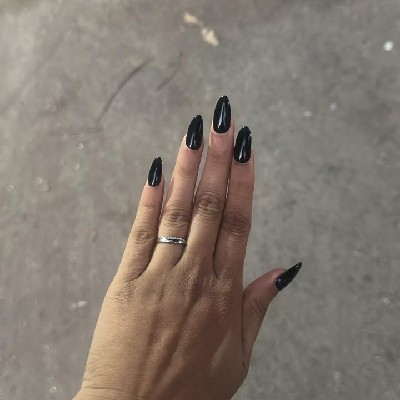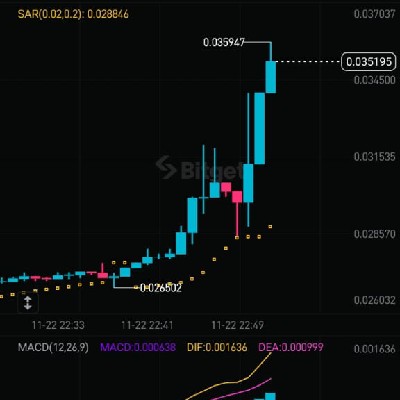
Cena TreatTREAT
USD
Nienotowany
$0.0001984USD
-0.61%1D
Cena Treat (TREAT) w United States Dollar wynosi $0.0001984 USD.
Dane pochodzą od zewnętrznych dostawców. Ta strona i podane na niej informacje nie promują żadnej konkretnej kryptowaluty. Chcesz handlować notowanymi monetami? Kliknij tutaj
Zarejestruj sięOstatnia aktualizacja: 2025-12-26 01:55:23(UTC+0)
Konwerter TREAT na USD
TREAT
USD
1 TREAT = 0.0001984 USD. Bieżąca cena konwersji 1 Treat (TREAT) na USD wynosi 0.0001984. Stawka ta ma charakter wyłącznie informacyjny.
Bitget oferuje najniższe opłaty transakcyjne spośród wszystkich głównych platform handlowych. Im wyższy poziom VIP, tym korzystniejsze stawki.
Treat – dane rynkowe
Wydajność cenowa (24 godz.)
24 godz.
Najniższ. z 24 godz.: $0Najwyższ. z 24 godz.: $0
Najwyższa dotychczasowa wartość (ATH):
$0.01250
Zmiana ceny (24 godz.):
-0.61%
Zmiana ceny (7 d.):
+18.49%
Zmiana ceny (1 r.):
-80.88%
Ranking rynkowy:
#5686
Kapitalizacja rynkowa:
--
W pełni rozwodniona kapitalizacja rynkowa:
--
Wolumen (24h):
--
Podaż w obiegu:
-- TREAT
Maks. podaż:
--
Całkowita podaż:
3.33B TREAT
Wskaźnik obiegu:
0%
Cena Treat w USD na żywo dzisiaj
Aktualna dzisiejsza cena Treat wynosi $0.0001984 USD, a bieżąca kapitalizacja rynkowa wynosi $0.00. Cena Treat spadła o 0.61% w ciągu ostatnich 24 godz., a 24-godzinny wolumen obrotu wynosi $0.00. Współczynnik konwersji TREAT/USD (Treat na USD) jest aktualizowany w czasie rzeczywistym.
Ile kosztuje 1 Treat w United States Dollar?
W tej chwili cena 1 Treat (TREAT) w United States Dollar wynosi $0.0001984 USD. Możesz teraz kupić 1 TREAT za $0.0001984 lub 50,409.58 TREAT za $10. W ciągu ostatnich 24 godzin najwyższa cena TREAT do USD wynosiła $0.0002000 USD, a najniższa cena TREAT do USD wynosiła $0.0001975 USD.
Czy uważasz, że cena Treat dziś wzrośnie czy spadnie?
Łączna liczba głosów:
Wzrost
0
Spadek
0
Dane głosowania są aktualizowane co 24 godziny. Odzwierciedlają one prognozy społeczności dotyczące trendu ceny Treat i nie należy ich traktować jako porady inwestycyjnej.
Teraz, gdy znasz już dzisiejszą cenę monety Treat, oto co jeszcze możesz sprawdzić:
Jak kupić walutę Treat (TREAT)?Jak sprzedać walutę Treat (TREAT)?Czym jest Treat (TREAT)?Co by się stało, gdybyś kupił(a) walutę Treat (TREAT)?Jaka jest prognoza ceny waluty Treat (TREAT) na ten rok oraz na lata 2030 i 2050?Gdzie mogę pobrać dane historyczne o cenach waluty Treat (TREAT)?Jakie są dzisiaj ceny podobnych kryptowalut?Chcesz natychmiast otrzymać kryptowaluty?
Kupuj kryptowaluty bezpośrednio za pomocą karty kredytowej.Handluj różnymi kryptowalutami na platformie spot w celu arbitrażu.Uwzględniono następujące informacje:Prognoza ceny waluty Treat, prezentacja projektu Treat, historia rozwoju i wiele więcej. Czytaj dalej, aby dowiedzieć się więcej o walucie Treat.
Prognoza ceny Treat
Kiedy jest dobry moment na zakup TREAT? Czy zalecane jest teraz kupno lub sprzedaż TREAT?
Podejmując decyzję o kupnie lub sprzedaży TREAT, należy najpierw rozważyć własną strategię handlową. Różnić się będzie także aktywność handlowa traderów długoterminowych i krótkoterminowych. Analiza techniczna TREAT Bitget może stanowić punkt odniesienia dla handlu.
Zgodnie z 4-godzinna analiza techniczna TREAT, sygnałem transakcyjnym jest Mocny zakup.
Zgodnie z Dzienna analiza techniczna TREAT, sygnałem transakcyjnym jest Kup.
Zgodnie z Tygodniowa analiza techniczna TREAT, sygnałem transakcyjnym jest Sprzedaj.
Jaka będzie cena TREAT w 2026?
W 2026, przy założeniu prognozowanego rocznego tempa wzrostu na poziomie +5%, oczekuje się, że cena Treat (TREAT) osiągnie $0.0002135; w oparciu o prognozowaną cenę na ten rok, skumulowany zwrot z inwestycji w przypadku zainwestowania i trzymania środków w wysokości Treat do końca 2026 osiągnie +5%. Więcej szczegółów można znaleźć tutaj: Prognozy ceny Treat na lata 2025, 2026 oraz 2030–2050.Jaka będzie cena TREAT w roku 2030?
W 2030 r., przy założeniu prognozowanego rocznego tempa wzrostu na poziomie +5%, oczekuje się, że cena Treat (TREAT) osiągnie $0.0002595; w oparciu o prognozowaną cenę na ten rok, skumulowany zwrot z inwestycji w przypadku zainwestowania i trzymania środków w wysokości Treat do końca 2030 r. osiągnie 27.63%. Więcej szczegółów można znaleźć tutaj: Prognozy ceny Treat na lata 2025, 2026 oraz 2030–2050.
Bitget Insights

PRAWIN09
2025/12/19 12:49
⚠️ Bitget is delisting 12 spot trading pairs on Dec 26, 2025!
Affected pairs: PINGPONG/USDT, MYRO/USDT, DOLO/USDT, SWTCH/USDT, SKATE/USDT, BOOST/USDT, FON/USDT, GTC/USDT, RAD/USDT, TREAT/USDT, GEAR/USDT, NEXA/USDT. 📉
Manage your orders & transfers before the deadline! 🔁
MYRO0.00%
TREAT0.00%

Kenniy
2025/12/13 18:47
$TREAT is showing solid bullish momentum after a clean breakout, supported by strong volume. Price is up over 100% in the last 24 hours and remains well above its short-, mid-, and long-term moving averages, keeping the uptrend firmly intact. At the same time, Bitget is standing out as the only major exchange running a US Launchpool, where staking BGB lets users earn from a 17.5M $US reward pool a straightforward way to generate extra US while holding BGB, especially with few incentives available elsewhere right now.
$JUV
BGB+0.11%
TREAT0.00%

chanaka🇱🇰
2025/12/13 15:30
treat
$TREAT now
TREAT0.00%

Ahamedalomshahin
2025/12/13 11:36
$SNEK buy now 10x,🚀
Sell $TREAT 👉 Buy $SNEK 10X PUMP Loading 🚀🚀
🚨 Tp 🎯 0.0015000$+
TREAT0.00%
SNEK-1.17%
Konwerter TREAT na USD
TREAT
USD
1 TREAT = 0.0001984 USD. Bieżąca cena konwersji 1 Treat (TREAT) na USD wynosi 0.0001984. Stawka ta ma charakter wyłącznie informacyjny.
Bitget oferuje najniższe opłaty transakcyjne spośród wszystkich głównych platform handlowych. Im wyższy poziom VIP, tym korzystniejsze stawki.
TREAT – źródła
Oceny Treat
4.4
Kontrakty:
0xfbd5...aaa146b(Ethereum)
Co możesz zrobić z kryptowalutami takimi jak Treat (TREAT)?
Łatwe wpłaty i szybkie wypłatyKupuj, aby gromadzić, sprzedawaj, aby osiągnąć zyskHandluj na rynku spot w celu arbitrażuHandluj kontraktami futures o wysokim ryzyku i wysokim zyskuZarabiaj pasywny dochód przy stabilnych stopach procentowychPrzelej aktywa za pomocą swojego portfela Web3Jak kupić walutę Treat?
Dowiedz się, jak zdobyć swoje pierwsze monety Treat w kilka minut.
Zobacz samouczekJak sprzedać walutę Treat?
Dowiedz się, jak wypłacić swoją walutę Treat w ciągu kilku minut.
Zobacz samouczekCzym jest Treat i jak działa Treat?
Treat jest popularną kryptowalutą. Jest to zdecentralizowana waluta peer-to-peer, w związku z czym każdy może przechowywać, wysyłać i otrzymywać walutę Treat bez potrzeby scentralizowanego organu, takiego jak banki, instytucje finansowe lub inni pośrednicy.
Zobacz więcejGlobalne ceny Treat
Jaka jest obecna wartość Treat w innych walutach? Ostatnia aktualizacja: 2025-12-26 01:55:23(UTC+0)
Kup więcej
Często zadawane pytania
Jaka jest obecna cena Treat?
Bieżąca cena monety Treat wynosi $0 za (TREAT/USD), przy czym bieżąca kapitalizacja rynkowa wynosi $0 USD. Wartość monety Treat podlega częstym wahaniom, ponieważ rynek kryptowalut jest aktywny przez całą dobę. Bieżąca cena monety Treat w czasie rzeczywistym i jej dane historyczne są dostępne na Bitget.
Czym jest 24-godzinny wolumen obrotu Treat?
W ciągu ostatnich 24 godzin wolumen obrotu Treat wyniósł $0.00.
Jaka jest najwyższa dotychczasowa wartość Treat?
Najwyższa dotychczasowy cena Treat to $0.01250. Ta najwyższa dotychczasowa cena jest najwyższą ceną dla Treat od czasu jego wprowadzenia.
Czy mogę kupić Treat na Bitget?
Tak, Treat jest obecnie dostępne na scentralizowanej giełdzie Bitget. Aby uzyskać bardziej szczegółowe instrukcje, zapoznaj się z naszym pomocnym przewodnikiem Jak kupić treat .
Czy mogę uzyskać stały dochód z inwestycji w Treat?
Oczywiście Bitget zapewnia platforma do handlu strategicznego, z inteligentnymi botami handlowymi do automatyzacji transakcji i osiągania zysków.
Gdzie mogę kupić Treat z najniższą opłatą?
Z przyjemnością informujemy, że platforma do handlu strategicznego jest już dostępny na giełdzie Bitget. Bitget oferuje wiodące w branży opłaty transakcyjne i głębokość, aby zapewnić inwestorom zyskowne inwestycje.
Ceny powiązanych kryptowalut
Cena Ethereum (USD)Cena Worldcoin (USD)Cena dogwifhat (USD)Cena Kaspa (USD)Cena Smooth Love Potion (USD)Cena Terra (USD)Cena Shiba Inu (USD)Cena Dogecoin (USD)Cena Pepe (USD)Cena Cardano (USD)Cena Bonk (USD)Cena Toncoin (USD)Cena Pi (USD)Cena Fartcoin (USD)Cena Bitcoin (USD)Cena Litecoin (USD)Cena WINkLink (USD)Cena Solana (USD)Cena Stellar (USD)Cena XRP (USD)
Ceny nowo notowanych monet na Bitget
Popularne promocje
Gdzie mogę kupić kryptowaluty?
Sekcja wideo — szybka weryfikacja, szybki handel
Jak ukończyć weryfikację tożsamości na Bitget i zabezpieczyć się przed oszustwami?
1. Zaloguj się na swoje konto Bitget.
2. Jeśli jesteś nowym użytkownikiem Bitget, obejrzyj nasz przewodnik poświęcony tworzeniu konta.
3. Najedź kursorem na ikonę swojego profilu, kliknij opcję „Nie zweryfikowano” i wybierz „Zweryfikuj”.
4. Wybierz kraj lub region wydający dokument tożsamości oraz jego rodzaj, a następnie postępuj zgodnie z instrukcjami.
5. Wybierz opcję „Weryfikacja mobilna” lub „PC” w zależności od preferencji.
6. Podaj swoje dane, prześlij kopię dokumentu tożsamości i zrób selfie.
7. Prześlij swoje zgłoszenie i gotowe — weryfikacja tożsamości zakończona.
Kup Treat za 1 USD
Pakiet powitalny o wartości 6200 USDT dla nowych użytkowników Bitget!
Kup Treat teraz
Inwestycje w kryptowaluty, w tym kupowanie Treat online za pośrednictwem Bitget, podlegają ryzyku rynkowemu. Bitget zapewnia łatwe i wygodne sposoby kupowania Treat. Dokładamy wszelkich starań, aby w pełni informować naszych użytkowników o każdej kryptowalucie, którą oferujemy na giełdzie. Nie ponosimy jednak odpowiedzialności za skutki, które mogą wyniknąć z kupna Treat. Ta strona i wszelkie zawarte w niej informacje nie stanowią poparcia dla żadnej konkretnej kryptowaluty.







